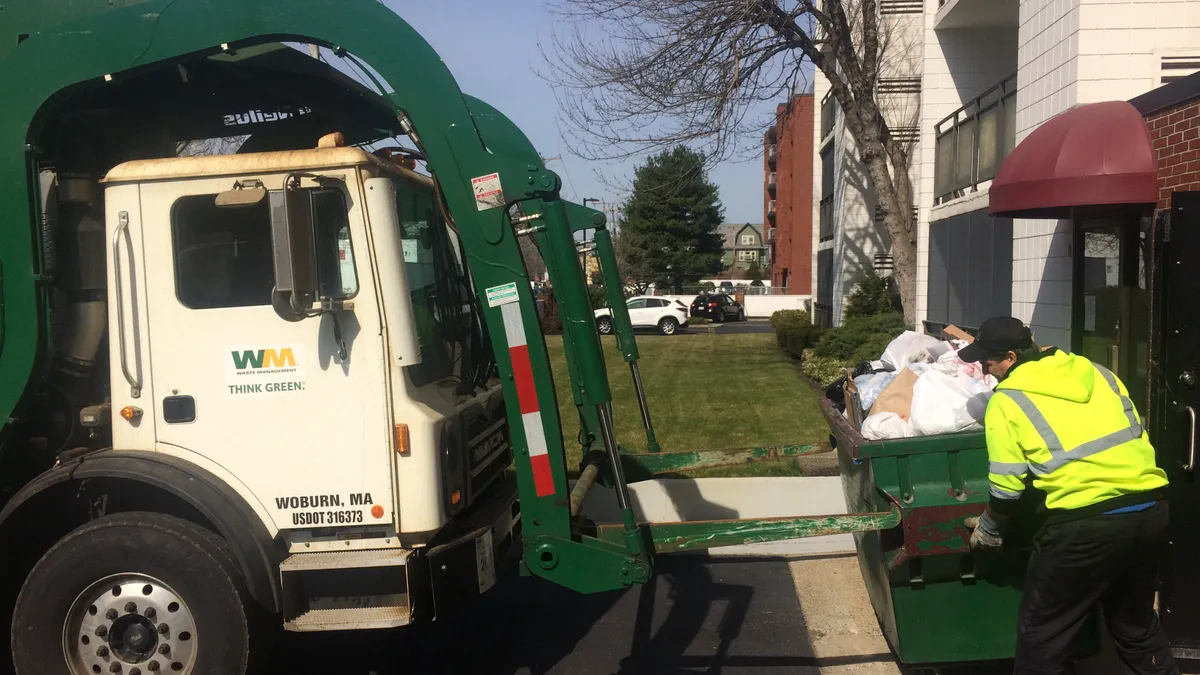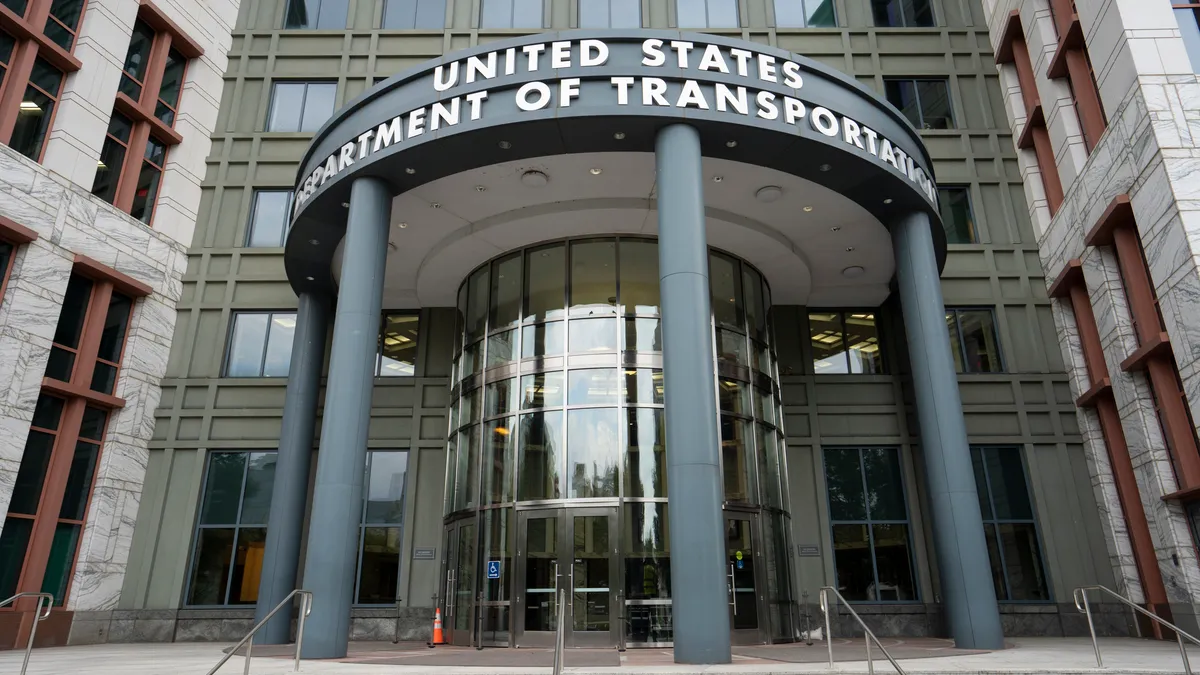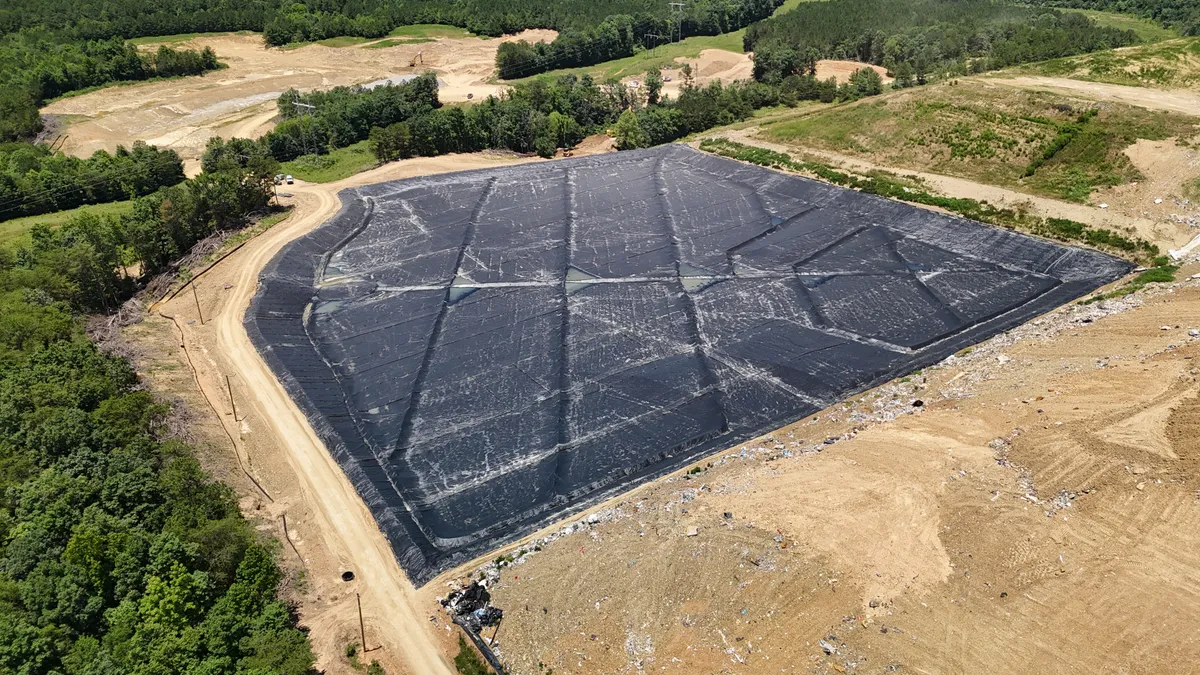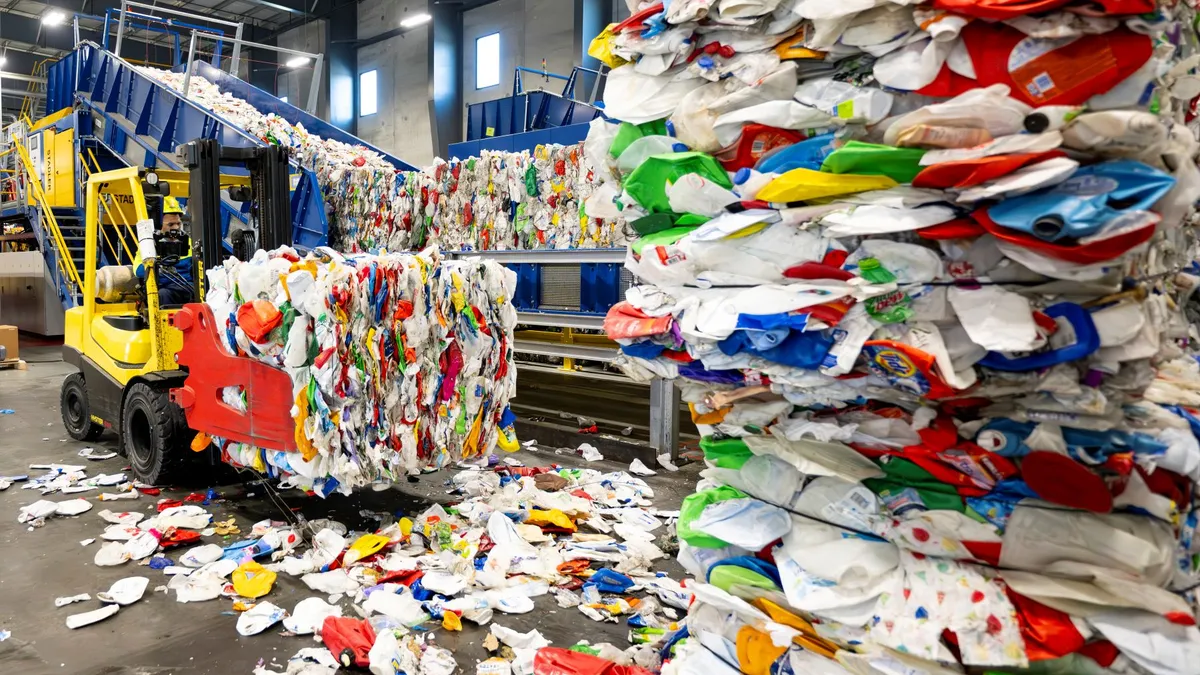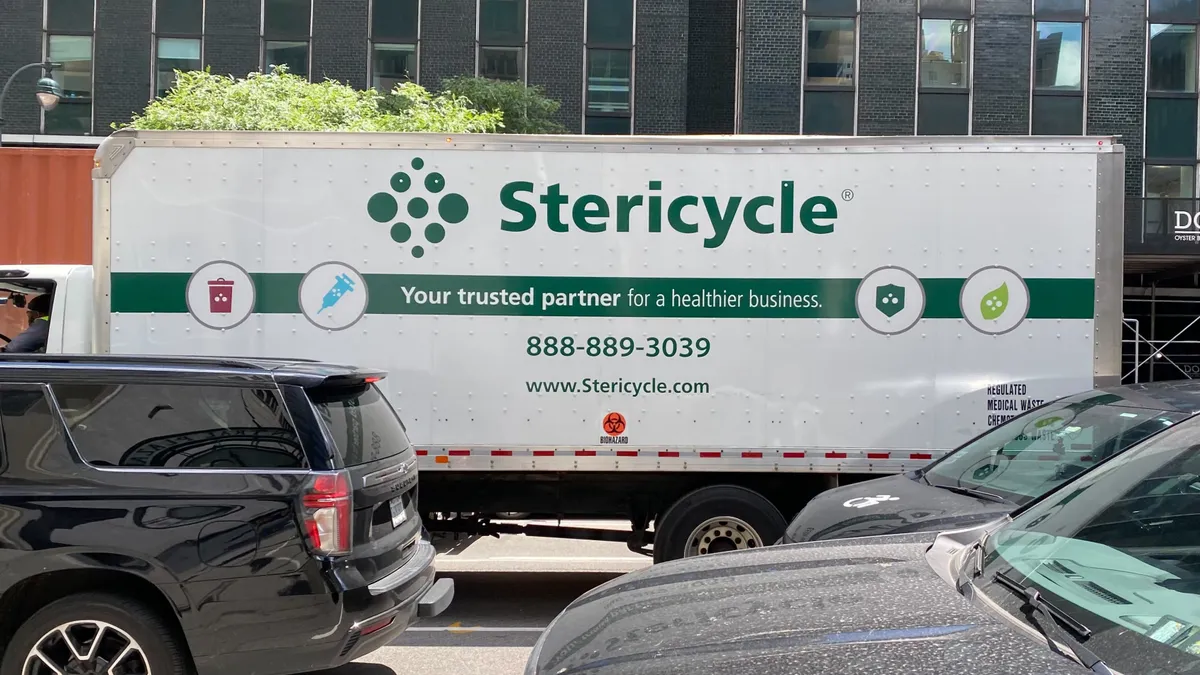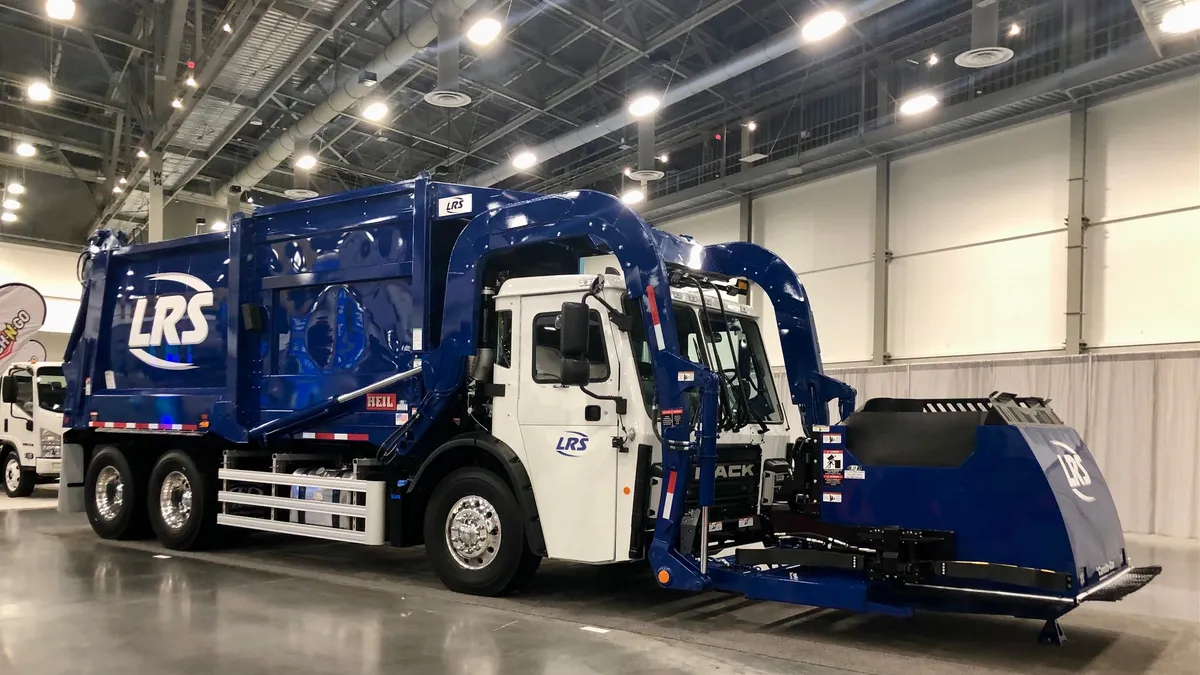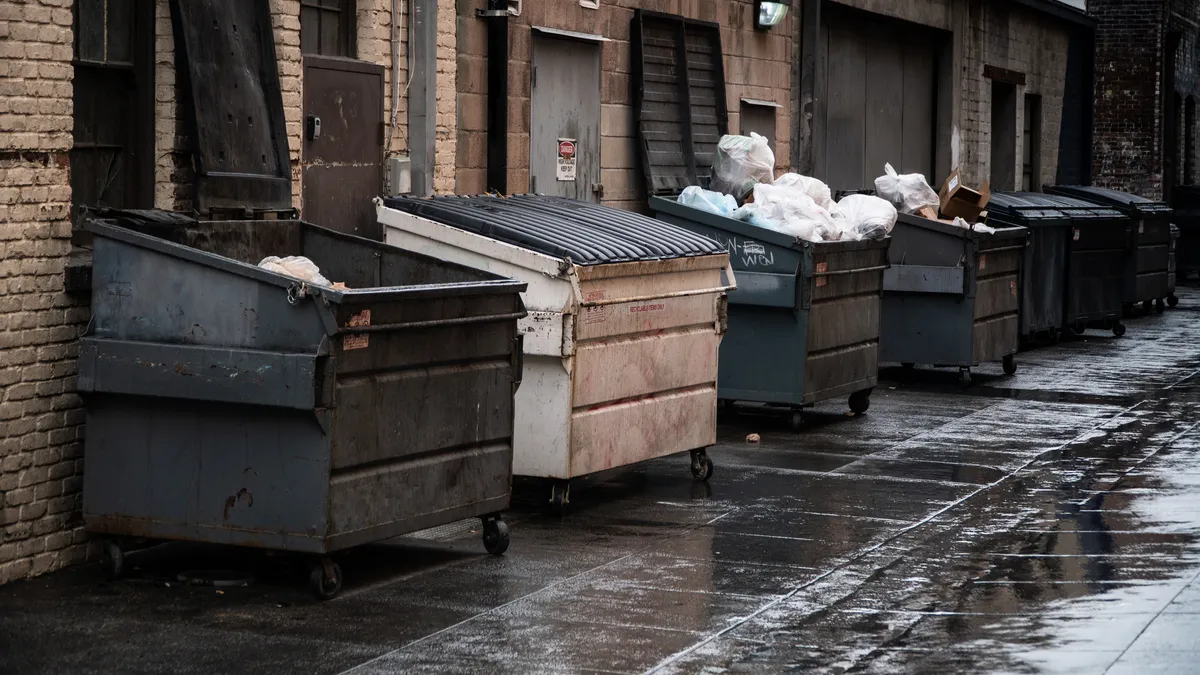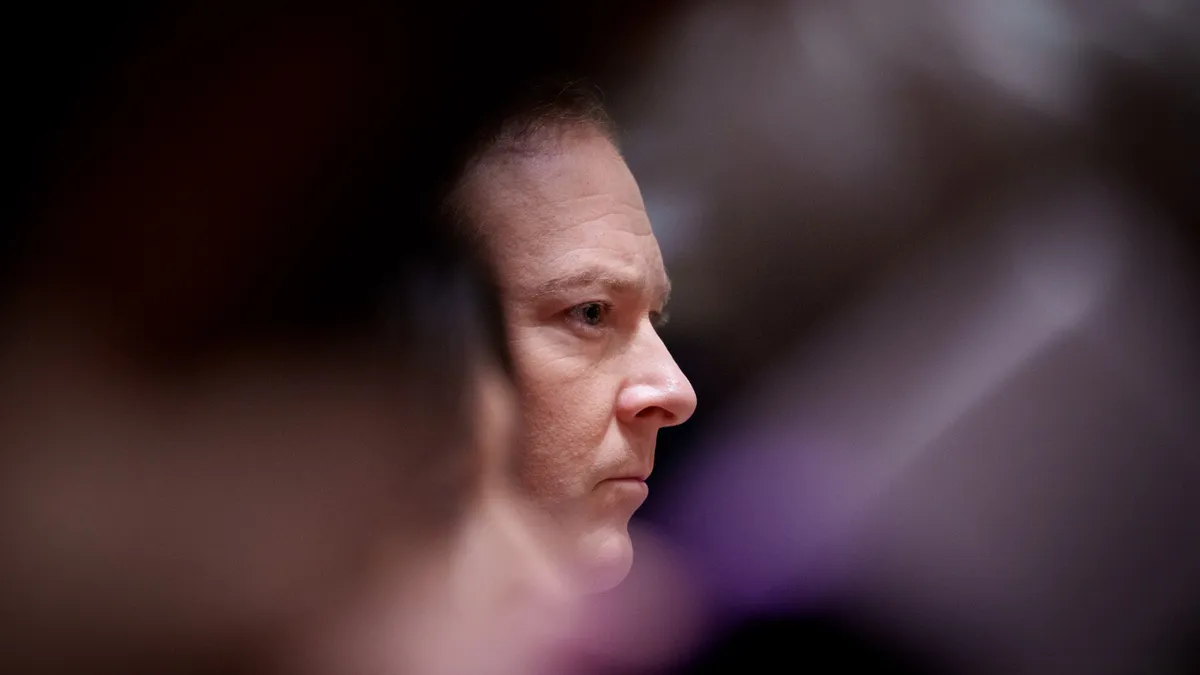Each container that Waste Management driver John Moss picks up presents the opportunity for a new surprise. A car may be parked in the way, two mattresses may be stacked on top, or it may be his first time going to a location. Each time, he instinctively reaches for a tablet in his truck to plot the next move.
This tablet, along with a windshield-mounted DriveCam and an extensive back-end routing software is all part of what Waste Management calls Service Delivery Optimization (SDO). The company sees the initiative as a way to take as much guesswork as possible out of the inherently complicated and sometimes unpredictable days of its drivers.
Moss has been with the company for nearly 20 years and said the new technology is a far cry from the reams of paper he used to deal with. Reading over photocopied maps with routes drawn on them, writing down truck inspection reports and filing away transfer station weigh-in slips used to make his days even longer. Now, he uses the tablet to record all of this information, plot his route and take pictures when needed.
"It takes things off your mind so you have less to think about, which makes things safer," said Moss.
After transferring from the company’s Rochester, NH garage to Woburn, MA more than a year ago, it has been even more important for Moss to keep his mind clear. The Woburn fleet services all types of accounts throughout the greater Boston area, including many in the city itself. During a 12-hour shift — 3 a.m. to 3 p.m. — Moss could service an average of 80 commercial container stops throughout a region that until recently, he didn’t know very well. On top of that, as the company continues to gain new business in the area, his route continues to evolve.
"It takes things off your mind so you have less to think about, which makes things safer."

John Moss
Driver, Waste Management
Some of these stops may be as easy as pulling up behind a gas station or quickly unlocking a gate and departing within minutes. Others may entail threading between dozens of brand new cars at a dealership, pulling the container out to avoid a power line and making a multi-point turn to get back out. Or manually rolling six containers out of apartment building storage rooms. Or trying to figure out why a piece of plywood from a hotel won’t fall in just right.
Factoring in the Boston area's near-constant traffic, the potential for delays seems almost endless.
Until the SDO system was implemented, the daily details of what each driver faced when they left the yard were somewhat mysterious to their supervisors back in the office. While they could still communicate via phone and radio to work out an issue or report a change, there was minimal real-time knowledge.
Now, District Manager Steve Cates can pull up details about what is going on with Moss or anyone else right from his desk. Whenever each driver inputs they’ve completed a stop, that information can be used as a timestamp to verify service for customers and also indicate whether the daily route plan is being followed. Cates said he has seen efficiency improve markedly since the company invested in these systems, which benefits both customers and shareholders.
"What we have is second to none in the industry," said Cates.
Using a program called Opus, Cates can also analyze the "plan versus actual" of a driver's day by watching the exact path the driver took between each stop and when those stops were collected. The goal is to achieve 85% compliance with the planned sequence and also adapt to potential changes in the sequence that the driver may have found are more efficient.
"It allows us the opportunity to truly manage our drivers from punch to punch," said Cates. "Before, we could only manage them when they were on the property."
With a total fleet of 88 trucks that currently service anywhere from 75 to 80 routes — including residential, commercial and roll-off business — the potential to find a few extra minutes of efficiency in each driver’s day can quickly add up for the Woburn facility.
That is especially important in Waste Management’s Boston market, where about 70% of customers have time constraints on when they can be picked up due to space, noise or other factors. This means that one truck may need to come back to the same town, or even the same neighborhood, multiple times per day.
Using a special routing software, the company can plot out the best way to service these stops and update it on a rolling basis. For example, if one route becomes too dense, as is currently happening in downtown Boston, a case could be made for splitting it into two.
***
Waste Management has already reported benefits from this SDO initiative on a national level and believes there is more to come. This could eventually lead to automatic customer billing after service confirmation, or possibly be linked to early autonomous processes that could monitor tire pressure and other indicators.
"We capture a lot of data," said Steve Batchelor, vice president of collection and fleet operations for the company. "I think we’ve just scratched the surface of the information we'll eventually be able to get."
Batchelor said the most useful information so far has been what is being captured by the cameras installed across the majority of Waste Management’s national fleet of 18,500 collection trucks. Each truck has five cameras — one in the rear, two on the sides and one on the windshield pointing both ways. The windshield DriveCam unit, made by Lytx, has the ability to record whenever an incident is detected or a driver tells it to.
Because it is always rolling and recording over itself, the camera can go back eight seconds once activated and will then record four seconds forward. Each recording is sent to Lytx for analysis and scored based on severity for supervisors and district managers to review with drivers. While being recorded doesn’t always sit well with drivers at first the majority of them adapt once they can see its value as a coaching tool.
"Think about the football players and how important Monday is," said Batchelor. "That's the day the players sit in front with the coaches and they observe the film. And that's where they're learning to get coached on how to improve their skills. Because if they don't improve their skills they're going to get outplayed."
In some cases a driver may be following the vehicle in front of them too closely, losing focus on the road or worse. Before the cameras were in place, Cates said his best option to track driver performance was to send a supervisor out for a ride-along. Though drivers were often on their best behavior and it was hard to observe their usual routine in the way that DriveCam allows. Conversely, the cameras can also help clear drivers in incidents where they weren’t at fault. Cates recounted one collision with a public transit bus where the truck driver was exonerated because his camera showed the bus running a red light.
“Think about the football players and how important Monday is ... That's the day the players sits in front with the coaches and they observe the film. And that's where they're learning to get coached on how to improve their skills. Because if they don't improve their skills they're going to get outplayed.”

Steve Batchelor
VP Collection and Fleet Operations, Waste Management
Both Cates and Batchelor say all of this technology has also helped reinforce a work culture that may be more appealing to potential applicants looking to get into the business.
"We're seeing signs of drivers being attracted to us because of our technology, the way that our structure is organized. I think they like the professionalism of it," said Batchelor. "That's their craft, that's their career and they see that and they respect what we're trying to do."
***
For Moss, the addition of the camera has been less noticeable than the tablet. He doesn’t put much stock in surveillance concerns and said the job of driving a truck that can carry up to 77,000 pounds of material when full should require constant vigilance.
"If you’re not doing anything wrong it shouldn’t bother you," said Moss of the camera.
During his years on the job Moss has driven plenty of different trucks with different systems, so the shift to cameras and tablets is part of that natural evolution. He recently made the switch to a brand new Mack MRU613 — putting about 13,000 miles on it to collect nearly 8,300 containers so far — and feels well-equipped to continue driving for as many as years as it takes to put his kids through college.
Along the way he will likely see new generations of technology in his cab that could make the job easier. Though as demonstrated by Moss during multiple hours of driving one of the most important things in his line of work, is awareness and understanding of the general public and that can't be replicated on a tablet.
For Moss, this may mean giving a reflective vest to a darkly attired bicyclist he saw on his route every morning, finding a metal rod to hold a temperamental hotel gate in place or hopping out to assist a custodian with extra bags on the ground. It also means watching out for distracted pedestrians and Massachusetts’ notoriously aggressive drivers.
"You just gotta keep your head on a swivel," he said. "It’s not you you have to look after. It’s everybody else."



